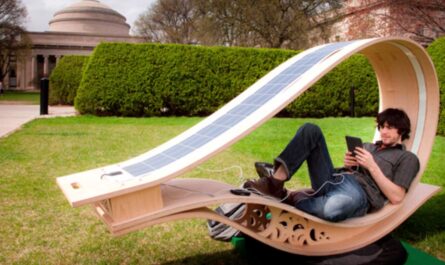Quantum physics is pushing scientific boundaries and revolutionizing technologies. The strange phenomena observed at the quantum scale are enabling new types of ultra-precise sensors with applications across many fields. Quantum sensors harness quantum properties like entanglement and superposition to achieve unprecedented levels of sensitivity. Let’s explore some examples of quantum sensors and the innovations they are enabling.
Atomic Magnetometers
One of the earliest and most developed types of quantum sensors are atomic magnetometers. They use quantum properties of atoms and molecules to detect magnetic fields with incredible precision. Atomic magnetometers work by monitoring how quantum states of atoms, like their spin, respond to a magnetic field. Even tiny magnetic fields can be detected by observing how they shift the energy levels of electron states. This allows atomic magnetometers to sense magnetic fields that are orders of magnitude smaller than what conventional devices can measure.
Atomic magnetometers have found applications in healthcare diagnostics. They can be used to take highly sensitive magnetic measurements of the brain and heart. This allows mapping brain activity with much greater detail than EEG technologies. It also enables detecting heartbeats from a distance without contact. Developing non-invasive diagnostics and monitoring tools could revolutionize how diseases are detected and treated.
Atomic magnetometers are also proving useful for archaeology and geology. They can detect tiny distortions in the Earth’s magnetic field caused by buried ferromagnetic objects like pipes or walls. This enables high resolution magnetic gradiometry to non-destructively map underground structures without excavation. It has led to discoveries of ancient sites and helped explore geology beneath the Earth’s surface. The enhanced sensitivity of quantum sensors is opening new windows into our history and environment.
Quantum Optical Imaging
Another area seeing exciting progress is quantum-enhanced imaging. It aims to use quantum entanglement and correlations between photons to push the limits of imaging technologies. Entangled photon pairs generated by nonlinear crystals exhibit properties that theoretically allow imaging beyond the classical diffraction limit. This could enable seeing smaller and finer details.
Researchers have demonstrated proof-of-principle quantum illumination systems that use entangled photon pairs. By monitoring how entanglement is lost upon encountering an object, they have imaged opaque objects hidden behind barriers with higher resolution and sensitivity in low light conditions compared to classical beams.
Looking ahead, quantum illumination could enable seeing through thick fog, identifying camouflaged objects, and performing medical imaging with less exposure to ionizing radiation. Research is ongoing to scale up quantum light sources and build practical quantum enhanced imaging devices. It holds promise for improving medical diagnostics, surveillance technologies, non-destructive inspection techniques, and more.
Navigation and Positioning with Atomic Clocks
Atomic clocks use the natural resonance frequencies of atoms to keep incredibly precise time, accurate to within seconds over thousands of years. They have revolutionized timekeeping and enabled advances like GPS. But atomic clocks have also found applications as ultra-precise sensors for position and orientation tracking.
Compact atomic clocks in devices like smartphones and vehicles could enable hyper-accurate indoor navigation and positioning without needing GPS satellite signals. They work by precisely measuring phase shifts in atomic resonance caused by motion. This allows calculating position by triangulation much like GPS, but with precision down to centimeters indoors.
Combining multiple atomic sensors also allows 6-degrees of freedom tracking for orientation, acceleration and rotation in addition to location. This could enable indoor spatial mapping, power indoor navigation for autonomous vehicles, enable new augmented reality applications and more. The auto industry is working on integrating atomic sensors to achieve centimeter-level vehicle self-positioning for advanced driver assist systems and future self-driving cars without external infrastructure.
Gravitational Field Sensing
Last but not least, quantum technologies may allow direct detection of gravitational waves and fields. Massive objects like black holes generate tiny ripples in spacetime itself known as gravitational waves. Directly measuring these could open an entirely new window onto the universe. One proposal envisions using quantum superpositions of masses to sense their tiny deformations caused by passing gravitational waves.
Alternatively, arrays of cold atom interferometers could extremely precisely measure changes in local gravitational fields. This could enable direct detection of gravitational waves, mapping hidden masses beneath the Earth and even probing fundamental physics questions around quantum gravity. Though still in early stages, gravitational sensing with quantum tech holds promise for breakthrough discoveries about astrophysical events and the nature of spacetime itself.
As the above examples illustrate, quantum sensors are enabling whole new classes of ultra-precise measurement tools thanks to strange quantum phenomena like entanglement and superposition. They are revolutionizing fields as diverse as healthcare, geosciences, imaging and navigation. The enhanced sensitivity achieved through quantum effects unlocks applications that were previously impossible. Many more quantum sensors utilizing diverse physical systems are currently in development for applications across science and technology. This new generation of precision technologies built on quantum foundations promises to keep accelerating discovery and innovation.
*Note:
1. Source: Coherent Market Insights, Public sources, Desk research
2. We have leveraged AI tools to mine information and compile it



